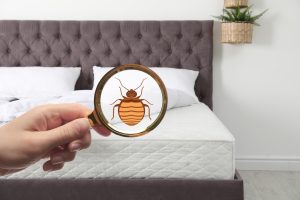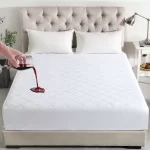Master the Art of Bed Bug Prevention: Keep Your Bed Safe and Clean.

Are you tired of waking up with itchy bites or constantly worrying about bed bugs invading your space? Fear not! With a few simple tips and tricks, you can master the art of bed bug prevention and keep your bed safe and clean. Bed bugs might be small, but they can cause big problems if left unchecked. Here’s how to keep them at bay:
Introduction:
Bed bugs, the tiny pests that strike fear into the hearts of homeowners and travellers alike. These minuscule creatures may be small, but they can cause big problems if left unchecked. Waking up with itchy bites or discovering an infestation in your home can be a nightmare. However, fear not! With the right knowledge and strategies, you can master the art of bed bug prevention and keep your bed safe and clean. In this comprehensive guide, we’ll delve into everything you need to know about bed bugs, their behaviour, signs of infestation, and most importantly, how to prevent them from infiltrating your sanctuary.Master the Art of Bed Bug Prevention.
- Regularly Inspect Your Bedding: Take the time to inspect your mattress, bed base and bedding regularly for any signs of bed bugs. Look for small reddish-brown insects, tiny white eggs, blood stains or dark spots that could indicate their presence.
- Encase Your Mattress and Bed Base: Invest in high-quality, bed bug-proof encasements for your mattress and bed base. These encasements create a barrier that prevents bed bugs from getting in or out, effectively trapping any existing bugs inside.
- Keep Your Bedding Clean: Wash your sheets, pillowcases, and blankets regularly in hot water and dry them on high heat. This helps kill any bed bugs or eggs that may be hiding in your bedding.
- Declutter Your Bedroom: Bed bugs love to hide in clutter, so keep your bedroom tidy and clutter-free. Reduce the number of items stored under your bed and in closets to minimize potential hiding spots for bed bugs.
- Vacuum Frequently: Vacuum your mattress, bed base, bed frame, and surrounding areas frequently to remove any bed bugs, eggs, or droppings. Be sure to empty the vacuum cleaner bag or canister immediately after use to prevent bed bugs from escaping.
- Be Cautious When Traveling: When staying in hotels or other accommodations, inspect the bed and surrounding areas for signs of bed bugs before unpacking. Keep your luggage off the floor and away from the bed to reduce the risk of bringing bed bugs home with you.
- Seal Cracks and Crevices: Seal any cracks or crevices in your bedroom walls, skirting boards, and furniture to prevent bed bugs from hiding and breeding in these areas.
- Seek Professional Help if Needed: If you suspect a bed bug infestation in your home, don’t hesitate to seek professional help. A trained pest control expert can assess the situation and recommend an appropriate treatment plan to eliminate the bed bugs.
Conclusion:
In conclusion, mastering the art of bed bug prevention is essential for maintaining a safe and clean sleeping environment. By understanding the behavior of bed bugs, recognizing the signs of infestation, and implementing proactive prevention strategies, you can minimize the risk of encountering these unwanted pests. Whether you’re at home or traveling, taking the necessary precautions can help safeguard your bed and preserve your peace of mind. Remember, early detection and swift action are key to effectively managing bed bug infestations and preventing their return. With the knowledge gained from this guide, you can rest easy knowing that you’re equipped to keep your bed safe and clean for years to come.
Please click this link to visit our website Cover and Protect .com for a complete range of bed bug protection products






